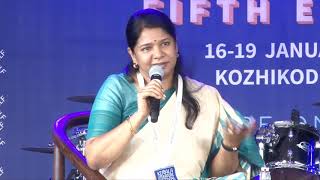Friday, 19 December, 2025г.
















Где искать: по сайтам Запорожской области, статьи, видео ролики
пример: покупка автомобиля в Запорожье
Quit India Movement | Wikipedia audio article
This is an audio version of the Wikipedia Article:
Quit India Movement
00:02:09 1 World War II and Indian involvement
00:04:07 1.1 Cripps' Mission
00:05:09 1.2 Factors contributing to the movement's launch
00:09:26 2 Resolution for immediate independence
00:11:54 3 Opposition to the Quit India Movement
00:12:20 3.1 Muslim League
00:13:02 3.2 Hindu Mahasabha
00:16:10 3.3 Communist Party of India
00:16:39 3.4 Princely States
00:17:20 4 No support to the Quit India Movement
00:17:31 4.1 Rashtriya Swayamsevak Sangh
00:19:57 5 Local violence
00:21:51 6 Suppression of the movement
00:24:22 7 See also
Listening is a more natural way of learning, when compared to reading. Written language only began at around 3200 BC, but spoken language has existed long ago.
Learning by listening is a great way to:
- increases imagination and understanding
- improves your listening skills
- improves your own spoken accent
- learn while on the move
- reduce eye strain
Now learn the vast amount of general knowledge available on Wikipedia through audio (audio article). You could even learn subconsciously by playing the audio while you are sleeping! If you are planning to listen a lot, you could try using a bone conduction headphone, or a standard speaker instead of an earphone.
You can find other Wikipedia audio articles too at:
https://www.youtube.com/channel/UCuKfABj2eGyjH3ntPxp4YeQ
You can upload your own Wikipedia articles through:
https://github.com/nodef/wikipedia-tts
"The only true wisdom is in knowing you know nothing."
- Socrates
SUMMARY
=======
The Quit India Movement, or the India August Movement, was a movement launched at the Bombay session of the All-India Congress Committee by Mahatma Gandhi on 8
August 1942, during World War II, demanding an end to British Rule of India.The Cripps Mission had failed, and on August 8, 1942, Gandhi made a call to Do or Die in his Quit India speech delivered in Bombay at the Gowalia Tank Maidan.
The All-India Congress Committee launched a mass protest demanding what Gandhi called "An Orderly British Withdrawal" from India.
Even though it was wartime, the British were prepared to act. Almost the entire leadership of the Indian National Congress was imprisoned without trial within hours of Gandhi's speech. Most spent the rest of the war in prison and out of contact with the masses. The British had the support of the Viceroy's Council (which had a majority of Indians), of the All India Muslim League, the princely states, the Indian Imperial Police, the British Indian Army and the Indian Civil Service. Many Indian businessmen profiting from heavy wartime spending did not support the Quit India Movement. Many students paid more attention to Subhas Chandra Bose, who was in exile and supporting the Axis Powers. The only outside support came from the Americans, as President Franklin D. Roosevelt pressured Prime Minister Winston Churchill to give in to some of the Indian demands. The Quit India campaign was effectively crushed. The British refused to grant immediate independence, saying it could happen only after the war had ended.
Sporadic small-scale violence took place around the country and the British arrested tens of thousands of leaders, keeping them imprisoned until 1945. In terms of immediate objectives, Quit India failed because of heavy-handed suppression, weak co-ordination and the lack of a clear-cut programme of action. However, the British government realized that India was ungovernable in the long run due to the cost of World War II, and the question for postwar became how to exit gracefully and peacefully.
In 1992 Reserve Bank of India issued a 1 rupee commemorative coin to mark the Golden Jubilee of the Quit India Movement.
Теги:
1942 establishments in india 1942 in india british empire in world war ii gandhism india in world war ii quit india movement wikipedia audio article learning by listening improves your listening skills learn while on the move reduce eye strain text to speech
Похожие видео
Мой аккаунт


 У вашего броузера проблема в совместимости с HTML5
У вашего броузера проблема в совместимости с HTML5


